Vue d'ensemble Équipement de fusion sélective par faisceau d'électrons
La fusion sélective par faisceau d'électrons (EBSM) est une technologie avancée de fabrication additive qui utilise un faisceau d'électrons pour fondre sélectivement des poudres métalliques, couche par couche, afin de créer des structures 3D complexes. Cette technologie est particulièrement adaptée aux matériaux de haute performance et aux applications nécessitant une résistance, une précision et une intégrité des matériaux supérieures. Dans ce guide complet, nous nous pencherons sur les spécificités de l'EBSM, nous explorerons les différents modèles de poudres métalliques utilisés dans le processus et nous fournirons des informations détaillées sur l'équipement, ses caractéristiques, ses applications et ses fournisseurs.
Qu'est-ce que la fusion sélective par faisceau d'électrons ?
L'EBSM est un processus dans lequel un faisceau d'électrons est dirigé vers un lit de poudre métallique, provoquant sa fusion. Ce processus est répété couche par couche jusqu'à ce que l'objet final en 3D soit terminé. Contrairement à d'autres méthodes de fabrication additive, l'EBSM offre une précision et des propriétés matérielles exceptionnelles, ce qui la rend idéale pour les industries critiques telles que l'aérospatiale, l'automobile et les implants médicaux.
Caractéristiques principales de l'équipement de fusion sélective par faisceau d'électrons
- Haute précision : L'EBSM permet d'obtenir une grande précision et des détails complexes grâce au contrôle minutieux du faisceau d'électrons.
- Polyvalence des matériaux : Capable de traiter une large gamme de poudres métalliques.
- Propriétés mécaniques supérieures : Les pièces produites présentent une résistance et une durabilité excellentes.
- Réduction des contraintes résiduelles : Le processus minimise les tensions internes dans le produit final.
- Utilisation efficace des matériaux : Taux élevé d'utilisation des matériaux avec un minimum de déchets.

Types de poudres métalliques pour la fusion sélective par faisceau d'électrons
Le choix de la poudre métallique est crucial dans l'EBSM, car il affecte directement la qualité et les propriétés du produit final. Nous dressons ici une liste de modèles de poudres métalliques spécifiques, en décrivant leur composition et leurs caractéristiques.
Modèles de poudres métalliques populaires pour EBSM
- Ti-6Al-4V (alliage de titane)
- Composition : 6% Aluminium, 4% Vanadium, équilibre Titane
- Propriétés : Rapport résistance/poids élevé, excellente résistance à la corrosion, biocompatibilité
- Applications : Composants aérospatiaux, implants médicaux
- Inconel 718 (alliage nickel-chrome)
- Composition : Nickel 50-55%, chrome 17-21%, fer, colombium, molybdène
- Propriétés : Résistance aux températures élevées, résistance à l'oxydation, bonne soudabilité
- Applications : Aubes de turbines, moteurs de fusées, réacteurs nucléaires
- AlSi10Mg (alliage d'aluminium)
- Composition : 10 % de silicium, 0,3 % de magnésium, équilibre de l'aluminium
- Propriétés : Léger, bonnes propriétés thermiques, excellent rapport résistance/poids
- Applications : Pièces automobiles, composants aérospatiaux, structures légères
- Acier inoxydable 316L
- Composition : Fer, 16-18% Chrome, 10-14% Nickel, 2-3% Molybdène
- Propriétés : Haute résistance à la corrosion, excellente ductilité, bonnes propriétés mécaniques
- Applications : Dispositifs médicaux, équipements de traitement chimique, applications marines
- CoCr (alliage cobalt-chrome)
- Composition : 60% Cobalt, 27-30% Chrome, équilibre Molybdène, Nickel
- Propriétés : Grande résistance à l'usure, excellente résistance à la corrosion, biocompatibilité
- Applications : Implants dentaires, implants orthopédiques, composants aérospatiaux
- Acier maraging
- Composition : 18% Nickel, 8-12% Cobalt, équilibre Fer
- Propriétés : Très haute résistance, excellente ténacité, bonne soudabilité
- Applications : Outillage, composants aérospatiaux, applications à haute résistance
- Hastelloy X (alliage de nickel-chrome-molybdène)
- Composition : Nickel, 20-23% Chrome, 8-10% Molybdène, 1,5-2,5% Cobalt
- Propriétés : Excellente résistance aux hautes températures, résistance à l'oxydation
- Applications : Moteurs à turbine à gaz, traitement chimique, échangeurs de chaleur
- Niobium
- Composition : Niobium pur
- Propriétés : Point de fusion élevé, excellente résistance à la corrosion, bonne biocompatibilité
- Applications : Supraconducteurs, appareils médicaux, composants aérospatiaux
- Cuivre
- Composition : Cuivre pur
- Propriétés : Excellente conductivité électrique et thermique, bonne ductilité
- Applications : Composants électriques, échangeurs de chaleur, radiateurs
- Acier à outils
- Composition : Variable (contient généralement du carbone, du chrome, du vanadium et du molybdène)
- Propriétés : Dureté élevée, excellente résistance à l'usure, bonne ténacité
- Applications : Outils de coupe, moules, matrices
Caractéristiques des Équipement de fusion sélective par faisceau d'électrons
L'équipement EBSM est conçu pour fournir une précision et une efficacité élevées dans la fabrication additive. Voici quelques caractéristiques essentielles de cet équipement :
Principaux éléments
- Pistolet à faisceau d'électrons : Génère et dirige le faisceau d'électrons avec une grande précision.
- Chambre de construction : Enferme la zone de construction, en maintenant un vide ou une atmosphère inerte.
- Distributeur de poudre : Distribue la poudre métallique uniformément dans la zone de construction.
- Lame de recouvreur : Étend chaque couche de poudre en douceur.
- Système de contrôle : Gère les paramètres du faisceau d'électrons et du processus de construction.
Caractéristiques principales
| Caractéristique | Description |
|---|---|
| Taille du bâtiment | Il s'agit généralement d'un produit de petite taille (100 mm) ou de grande taille (1000 mm) dans une ou plusieurs dimensions. |
| Résolution | Haute résolution avec une épaisseur de couche allant de 20 à 100 micromètres. |
| Exigences en matière d'alimentation | Nécessite une puissance électrique importante, souvent de l'ordre de plusieurs kilowatts. |
| Contrôle de l'atmosphère | Utilise un vide ou un gaz inerte (comme l'argon) pour éviter l'oxydation et la contamination. |
| Intégration des logiciels | Logiciel avancé pour la conception, la simulation et le contrôle, garantissant un respect précis du modèle CAO. |
| Système de refroidissement | Des systèmes de refroidissement efficaces pour gérer la chaleur générée pendant le processus de fusion. |
| Compatibilité des matériaux | Capable de traiter une grande variété de poudres métalliques, y compris le titane, l'aluminium, l'acier inoxydable et les superalliages à base de nickel. |
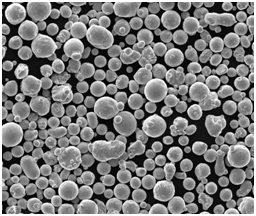
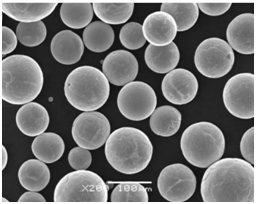
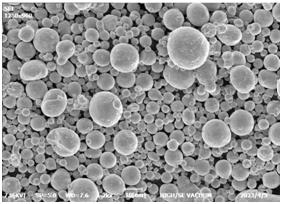

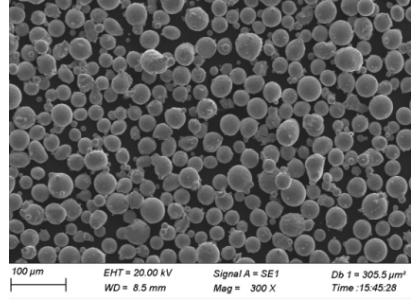
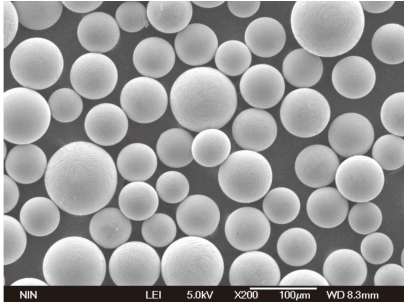
Applications de l'équipement de fusion sélective par faisceau d'électrons
La technologie EBSM est polyvalente et utilisée dans de nombreux secteurs. Voici quelques applications courantes :
Applications industrielles
| L'industrie | Applications |
|---|---|
| Aérospatiale | Composants de moteurs, pièces structurelles, géométries complexes, matériaux légers |
| Automobile | Pièces de moteur, composants sur mesure, structures légères |
| Médical | Implants orthopédiques, implants dentaires, instruments chirurgicaux |
| L'énergie | Aubes de turbines, échangeurs de chaleur, composants de réacteurs nucléaires |
| Défense | Blindage léger, composants d'armes, pièces de drones |
| Outillage | Moules, matrices, outils de coupe |
| Électronique | Dissipateurs thermiques, composants électriques, connecteurs |
Applications détaillées
- Composants aérospatiaux : L'EBSM est utilisé pour fabriquer des pièces aérospatiales légères et complexes, ce qui permet de réduire le gaspillage de matériaux et d'améliorer les performances.
- Implants médicaux : La capacité de créer des modèles complexes avec des matériaux biocompatibles fait de l'EBSM un outil idéal pour la production d'implants sur mesure.
- Pièces détachées automobiles : Des composants performants et légers peuvent être fabriqués pour améliorer le rendement énergétique et les performances des véhicules.
- Secteur de l'énergie : Les aubes de turbines et les échangeurs de chaleur bénéficient de la grande solidité et de la résistance à la température des pièces produites en EBSM.
- Outillage : Les moules et matrices de précision sont conçus pour offrir une durabilité et une résistance à l'usure exceptionnelles.
Spécifications et normes pour Équipement de fusion sélective par faisceau d'électrons
Pour garantir la qualité et la cohérence, les équipements PEMS doivent respecter certaines spécifications et normes.
Spécifications de l'équipement PEMS
| Spécifications | Description |
|---|---|
| Volume de construction | Variable, généralement de 200 x 200 x 200 mm à 700 x 700 x 400 mm |
| Épaisseur de la couche | 20-100 micromètres |
| Puissance du faisceau | 3-10 kW |
| Vitesse de balayage | Jusqu'à 8 m/s |
| Résolution | ± 0,1 mm |
| Contrôle de l'atmosphère | Vide ou gaz inerte (par exemple, argon) |
| Logiciel | Logiciel CAD/CAM intégré avec surveillance et contrôle en temps réel |
Normes pour l'équipement PEMS
| Standard | Description |
|---|---|
| ASTM F3187 | Guide standard pour le processus de fabrication additive par fusion par faisceau d'électrons |
| ISO/ASTM 52900 | Terminologie standard pour la fabrication additive |
| ISO 13485 | Systèmes de gestion de la qualité pour les dispositifs médicaux |
| AS9100 | Systèmes de gestion de la qualité pour l'aérospatiale |
| ISO 9001 | Normes générales de gestion de la qualité |
Fournisseurs et détails des prix
Lors de l'achat d'un équipement EBSM, il est essentiel de s'adresser à des fournisseurs réputés et de comparer les prix.
Liste des fournisseurs et prix
| Fournisseur | Modèle d'équipement | Fourchette de prix | Informations sur le contact |
| Arcam (GE Additive) | Arcam EBM Q10plus | $500,000 – $1,000,000 | www.ge.com/additive |
| Sciaky Inc. | Série EBAM 300 | $1,000,000 – $2,500,000 | www.sciaky.com |
| Renishaw | RenAM 500E | $600,000 – $1,200,000 | www.renishaw.com |
| Freemelt | Freemelt ONE | $400,000 – $800,000 | www.freemelt.com |
| Industries additives | MétalFAB1 | $800,000 – $1,500,000 | www.additiveindustries.com |
| Xi’an Bright Laser | EP-M250 | $500,000 – $1,000,000 | www.xbmetal.com |
| Aerosint | EBM multi-matériaux | $700,000 – $1,400,000 | www.aerosint.com |
| Systèmes 3D | DMP Flex 350 | $500,000 – $1,200,000 | www.3dsystems.com |
| Trumpf | TruPrint 3000 | $700,000 – $1,300,000 | www.trumpf.com |
| EOS | EOS M 290 | $600,000 – $1,100,000 | www.eos.info |
Comparaison des avantages et des inconvénients de la fusion sélective par faisceau d'électrons
Les PEMS présentent des avantages distincts et certaines limites. Nous les comparons ici afin d'offrir une perspective équilibrée.
Avantages et inconvénients des PEMS
| Aspect | Avantages | Inconvénients |
|---|---|---|
| Précision | Grande précision et détails complexes | Nécessite un contrôle et un suivi précis |
| Propriétés des matériaux | Propriétés mécaniques supérieures, réduction des contraintes résiduelles | Limité aux matériaux compatibles avec le traitement par faisceau d'électrons |
| Vitesse de construction | Temps de construction plus rapides que pour d'autres méthodes de fabrication additive | Peut être plus lent pour les très grandes pièces |
| Efficacité des matériaux | Utilisation élevée des matériaux avec un minimum de déchets | La manipulation et le recyclage des poudres peuvent être complexes |
| Coûts opérationnels | Rentabilité pour les pièces complexes et de grande valeur | Investissement initial et coûts opérationnels élevés |
| Complexité | Capacité à produire des géométries très complexes | Nécessite une expertise en matière de conception et de paramètres de processus |
| Post-traitement | Généralement moins de post-traitement que les autres méthodes | Certaines pièces peuvent encore nécessiter des processus de finition tels que l'usinage |
| Polyvalence | Convient à un large éventail d'applications, de l'aérospatiale au secteur médical | Ne convient pas aux matériaux non métalliques |
| Contrôle de l'atmosphère | L'atmosphère contrôlée garantit des pièces de haute qualité sans oxydation | Le maintien du vide ou de l'atmosphère inerte peut être techniquement exigeant |
Optimiser la structure des paragraphes pour améliorer l'engagement
Lorsque l'on écrit sur des sujets techniques tels que l'EBSM, il est essentiel de maintenir l'intérêt du lecteur. Voyons comment y parvenir efficacement.
Utiliser un ton conversationnel et un style engageant
Imaginez que vous êtes à un dîner et que vous expliquez les PEMS à un ami qui s’intéresse à l’impression 3D. Vous ne plongeriez pas directement dans le jargon technique, n’est-ce pas ? Au lieu de cela, vous commenceriez par quelque chose de concret, comme “Tu t'es déjà demandé comment ils fabriquent ces pièces super complexes pour les moteurs à réaction ? Eh bien, il existe une technologie incroyable appelée fusion sélective par faisceau d'électrons...” ;
En décomposant des informations complexes en morceaux digestes et en utilisant des analogies, des métaphores et des questions rhétoriques, vous maintenez l’intérêt du lecteur. Par exemple, expliquer la précision de l'EBSM pourrait être comparé à “dessiner avec un stylo à pointe fine plutôt qu'avec un crayon - le faisceau d'électrons est le stylo, ce qui permet d'obtenir des détails complexes et des bords lisses.” ;

FAQ
| Question | Réponse |
|---|---|
| Quels matériaux peuvent être utilisés avec les PEMS ? | L'EBSM peut traiter une grande variété de poudres métalliques, notamment les alliages de titane, les superalliages à base de nickel, les alliages d'aluminium, l'acier inoxydable, les alliages de cobalt et de chrome, etc. |
| Comment l'EBSM se compare-t-elle aux autres méthodes d'impression 3D ? | L'EBSM offre des propriétés mécaniques et une précision supérieures, ainsi qu'une réduction des contraintes résiduelles par rapport à des méthodes telles que le SLM (Selective Laser Melting) ou le DMLS (Direct Metal Laser Sintering). |
| Quelles sont les applications courantes des PEMS ? | Les applications courantes comprennent les composants aérospatiaux, les implants médicaux, les pièces automobiles, les composants du secteur de l'énergie et l'outillage. |
| Les PEMS conviennent-ils à la production de gros volumes ? | En raison de sa précision et de son efficacité matérielle, l'EBSM est généralement utilisé pour des pièces complexes de grande valeur plutôt que pour la production de gros volumes. |
| Quel post-traitement est nécessaire pour les pièces EBSM ? | En fonction de l'application, les pièces EBSM peuvent nécessiter un post-traitement minimal, tel que l'usinage, le polissage ou le traitement thermique, pour obtenir la finition et les propriétés souhaitées. |
Conclusion
La fusion sélective par faisceau d'électrons représente une avancée révolutionnaire dans le domaine de la fabrication additive. Sa capacité à créer des pièces complexes et performantes avec précision et efficacité lui confère une valeur inestimable dans diverses industries. En comprenant les types de poudres métalliques, les caractéristiques de l'équipement et les diverses applications, nous pouvons apprécier le potentiel de transformation de la technologie EBSM. Que vous soyez ingénieur, fabricant ou simplement passionné de technologie, le monde de l'EBSM regorge de possibilités et façonne l'avenir de la fabrication, faisceau d'électrons par faisceau d'électrons.

